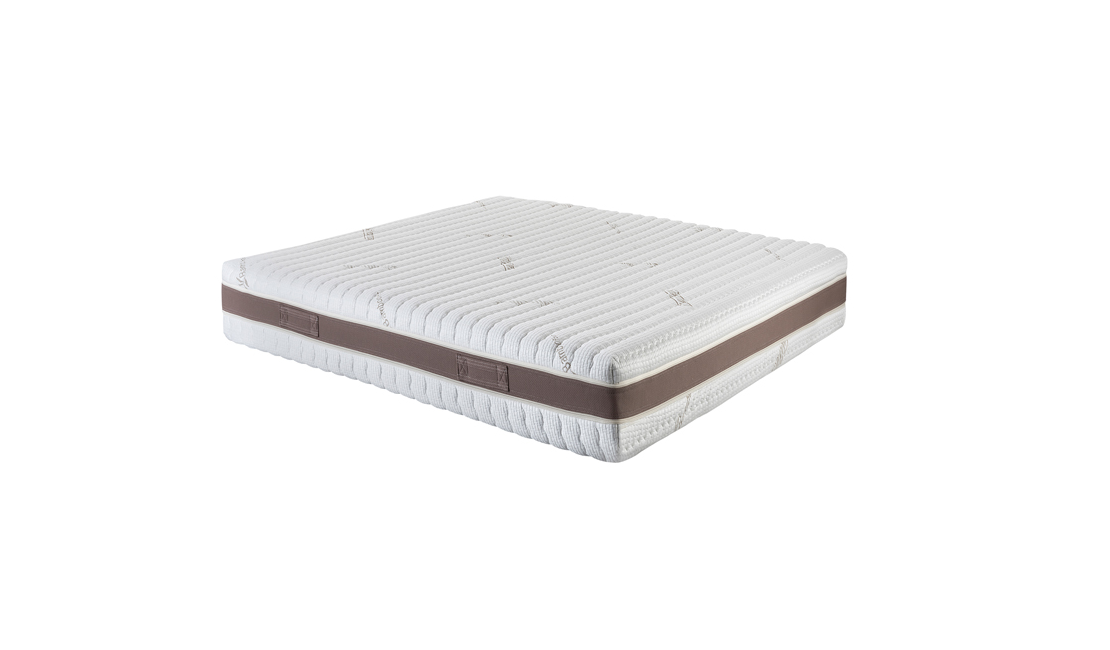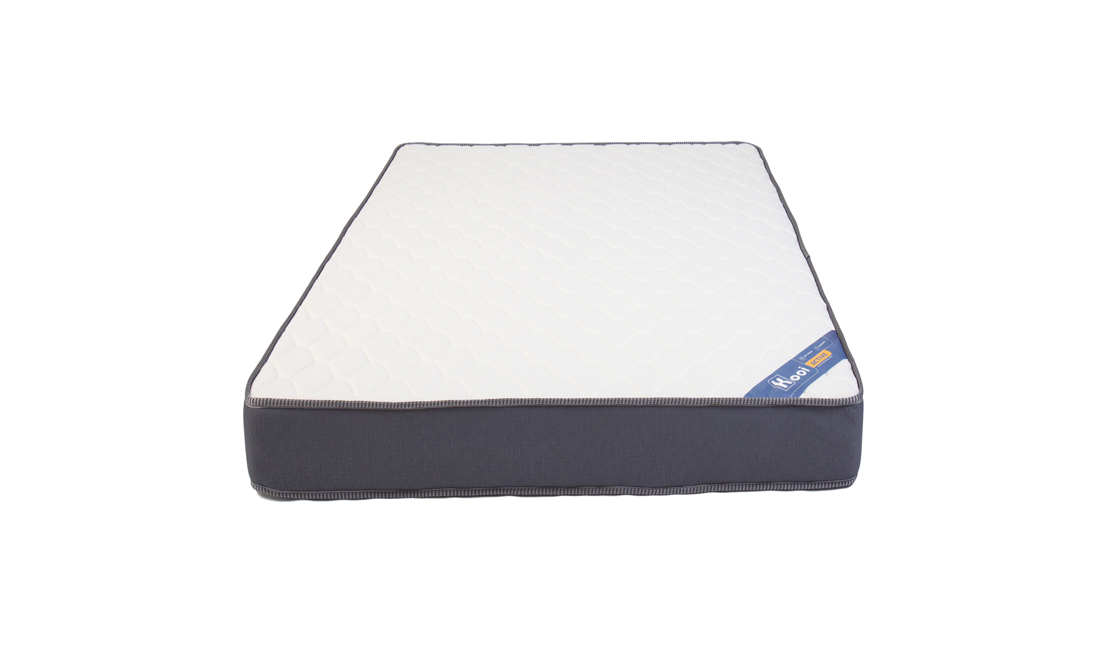Not sure where to start?
Answer a few simple questions and we’ll direct you to your perfect bed.
Enable notifications to get the best news on sales and special offers
As soon as you hit the hay your nose starts to itch, you feel clogged up every morning and you’re starting to suspect your mattress or pillow. Sound familiar? Probably. That’s why you’re reading this blog, isn’t it? You’re tired of bedroom allergies and you want to deal with them once and for all! If this is you, you’re in the right place. In this article, The Mattress Warehouse explains everything you need to know about bedroom allergies. From common allergens to allergy-proofing your bedroom against allergens with hypoallergenic materials.
Ready to dust out those dust mites for good? Let’s dive in.
If you wake up with irritated eyes and an itchy nose regularly, your mattress might be at fault. Well, maybe not the mattress itself, but the tiny critters that live in it. On the other hand, you may well have an allergic reaction to the material that your mattress is made from.
But how can you tell?
Typically, your body would react differently to living things than to chemical irritants.
Let’s say you still sleep on the spring mattress your grandma slept on for the past 20 years before she passed it on to you when she moved into the old-aged home. Chances are your mattress is riddled with all sorts of living creepy crawlies (more on that in a bit) that can cause an allergic reaction. Old mattresses, especially those containing coils, have lots of space for allergens to thrive in. Moreover, they may not contain hypoallergenic materials.
So if you regularly wake up with;
You may be allergic to the creatures that live in your mattress.
If your mattress is older than seven years and you suffer from these allergens, it’s time to invest in a new one. Alternatively, clean your mattress thoroughly.
There is a slight chance that you react negatively to the material that your mattress is manufactured from. It is not common, but some people show allergic reactions to latex foam (a natural foam), whereas others are allergic to the chemicals in memory foam.
Tip: Find out more about foam mattresses here
If you suffer from one or more of the following symptoms after lying on your bed, you may be allergic to your mattress:
However, there may be many reasons why you have these symptoms and if they persist, we’d suggest you visit your medical practitioner to get an expert opinion about your symptoms.
This is where the creepy crawlies we mentioned earlier come in. Your bedroom, and your bed in particular, is the perfect environment for all sorts of tiny little creatures to live in. Moreover, bacteria and fungi may also thrive in your mattress (depending on if it’s hypoallergenic or not). You see, while you sleep you sweat and shed skin on your bed. And if your mattress is not protected, some of that organic matter may find its way into your mattress, where it serves as a food source for critters and fungi alike.
Without further ado, here are 4 of the most common bedroom allergens:
These are the most common household mites. These microscopic creatures cannot be seen with the naked eye, so you are not likely to recognise them from sight. However, large colonies of dust mites can cause slight discolouration in your mattress. Be on the lookout for that. Dust mites feed off dead skin cells and absorb water from the atmosphere around them.
If you sweat into your mattresses and you shed skin cells onto your mattress, you probably have some dust mites that live in your bed.
Typical allergic reactions to dust mites:
Now, these you can see with the naked eye, albeit you have great eyesight. Bed bugs are tiny reddish-brown insects that feed on human and animal blood. They will probably not make you sneeze or give you itchy eyes, but they do leave plenty of itchy little bite marks where they fed. You might confuse a patch of bed bug bites with a nasty rash.
Typical allergic reactions to bed bugs:
Tip: Find out more about bed bugs and how to get rid of them here
A type of fungi that thrives in moist, dark conditions. Such as open spaces in worn-out and sweated-on mattresses. You might have seen mould before when you left that loaf of bread in the bin for three weeks. Those tiny filaments that you observed on the mould are known as spores, through which mould reproduces and spreads. These spores are incredibly light and can travel through the air unaided.
If you lie down on a mould-filled mattress, some of those spores will invariably find their way into your airways, eyes or onto your skin, where it may cause one of these common allergic reactions:
People with asthma may react more severely to mould and dust mite allergies.
Sad to say, but having your pets sleep on your bed is not the best idea if you suffer from allergies. Your furry friend is likely to shed dust and hair on your bed, which can cause an allergic reaction. Breathing in pet dander can definitely cause your sinuses to clog up and give you red, itchy eyes. Moreover, it gives even more food for dust mites.
Absolutely not!
There are fantastic materials that can help alleviate your allergies. Moreover, you can allergy-proof your bedroom to make it less hospitable for these common allergens. For instance, when you replace your mattress, buy a hypoallergenic mattress.
We’ve used that “H” word a lot, haven’t we? You may be wondering what it means.
A hypoallergenic mattress is manufactured from materials with anti-allergenic properties. In other words, the material repels common allergens like dust mites and mould, making it harder for them to get a foothold in your mattress. And with fewer allergens in your mattress, you are less likely to suffer from allergies.
In medical terminology, the prefix “hypo” means less than normal, or under. And an allergen is something that can cause an allergic reaction. When you put the two together it refers to a substance that is less likely to cause an allergic reaction.
Some mattresses are more hypoallergenic than others. For example:
As a rule, you’d want to avoid spring- and pillowtop mattresses if you suffer from allergies. The top, comfort layer in pillowtop mattresses has an open cell structure, so allergens can easily accumulate there. Likewise, there is space around springs where allergens can gather and multiply.
If you enjoy the feeling of sleeping on a spring mattress, go for a hybrid mattress. These mattresses combine foam technologies in the upper layers and have smaller springs at the base of the mattress. The foam layers at the top protect against dust mites and mould.
Here are our favourite picks:

The Magniflex Vitale Naturale Mattress has a removable bamboo cover for extra protection and easy care
With a medium comfort rating, the Magniflex Vitale Naturale Mattress can easily accommodate any type of sleeping position. It also has excellent cooling properties to negate those sweltering night sweats.

The Sealy Hybrid Mattress has fantastic hypoallergenic properties
The firm comfort rating makes the Sealy Hybrid Sage Firm Mattress an excellent choice for heavyset people. You can lie down with the assurance that your mattress will give you proper support throughout the night. Furthermore, the moisture-wicking properties and Climate Control system ensure an enjoyable night’s rest.

The Kooi Active Mattress is one of those revolutionary beds in a box
The Kooi Active Mattress is perfect for your growing children who suffer from allergies. With an incredible 20-year service warranty your children will have a proper mattress to sleep on until they leave home.
Apart from getting a hypoallergenic mattress, there are a couple of additional measures you can take to rid your bed and bedroom of allergens:
So yes, your mattress may be responsible for your constant sinus problems and itchy eyes. But luckily you now know that it can be solved. Browse for hypoallergenic mattresses and mattress protectors online at The Mattress Warehouse.
Disclaimer: This article is intended for informational purposes only and is not a substitute for professional advice.
Bed Shopping: A Family-Focused Approach to Smarter, Not Pricier Sleep
Sleeper Couch or Sofa Bed? A Guide to What Works for Your Space
Beds For Sale: What to Know Before You Buy
Best Beds: The 7 Best Bed Brands in South Africa
Comparing Queen Beds & Double Beds: Pros, Cons & Tips
5 Affordable Kids Beds That Don’t Compromise on Quality
How to Style a Three-Quarter Bed for Maximum Style & Comfort
Bedroom Furniture Guide for Newlyweds: From “I Do” to Move-In
Why Single Beds Are Making a Comeback: Secrets to a Functional Home
From Dorm Room to First Apartment: Why a Double Mattress Is Ideal
Bed Shopping: A Family-Focused Approach to Smarter, Not Pricier Sleep
Sleeper Couch or Sofa Bed? A Guide to What Works for Your Space
Beds For Sale: What to Know Before You Buy
Best Beds: The 7 Best Bed Brands in South Africa
Comparing Queen Beds & Double Beds: Pros, Cons & Tips
5 Affordable Kids Beds That Don’t Compromise on Quality
How to Style a Three-Quarter Bed for Maximum Style & Comfort
Bedroom Furniture Guide for Newlyweds: From “I Do” to Move-In
Why Single Beds Are Making a Comeback: Secrets to a Functional Home
From Dorm Room to First Apartment: Why a Double Mattress Is Ideal